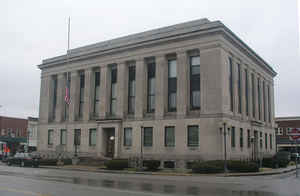Sumner County, Tennessee
Sumner County Education, Geography, and History

Sumner County is a county located in the state of Tennessee. Based on the 2010 census, the population was 160,645. Its county seat is
Gallatin, and its largest city is Hendersonville. The county is named for American Revolutionary War hero General Jethro Sumner.
Sumner County is part of the Nashville-Davidson–Murfreesboro–Franklin, TN Metropolitan Statistical Area.
Etymology - Origin of Sumner County Name
Named in honor of Jethro Sumner (1733-1785), French and Indian War soldier, Revolutionary War commander at Charleston, Brandywine and Germantown who defended North Carolina against Cornwallis in 1780.
Demographics:
County QuickFacts: CensusBureau Quick Facts
History of Sumner County
Created 1786 from Davidson County; named in honor of Jethro Sumner (1733-1785), French and Indian War soldier, Revolutionary War commander at Charleston, Brandywine and Germantown who defended North Carolina against Cornwallis in 1780.
Sumner County was formed in 1786 from Davidson County. (Public Acts of Tennessee 1786, Chapter 32).
Tennessee Encyclopedia of History and Culture
Archaeological evidence in Sumner County indicates occupation by Paleoindian, Archaic, Woodland, and
Mississippian cultures in the deep past. Two easily accessible prehistoric mounds stand at Castalian Springs, where
Native Americans for centuries came to hunt the game which gathered at the springs and its salt lick. The first
white long hunters included Henry, Charles, and Richard Skaggs, and Joseph Drake in 1765. Among other early
explorers and long hunters were James Smith and an eighteen-year-old male mulatto slave in 1766, and Kasper Mansker,
Isaac Bledsoe, and others in 1771-72. The first permanent settler was the fearless Thomas Sharp Spencer, who earned
that distinction by living several months in the hollow of a sycamore tree at Bledsoe's Lick in 1776, then planting
crops and building cabins from 1776 to 1779. By 1783 settlers had erected three forts--Mansker's, Bledsoe's, and
Asher's--for protection against Indian attack.
In 1786 the North Carolina General Assembly created Sumner County and named it for Revolutionary War General Jethro
Sumner. The rolling hills and well-watered lands attracted pioneer leaders of the stature of Daniel Smith and
Anthony Bledsoe as well as those of more meager means such as Hugh Rogan. However, Native Americans did not
passively accept this frontier advance; periodic warfare resulted in the deaths of both Indians and settlers,
including Robert Peyton, the last known Sumner settler killed by Indians. The opening of wagon roads, the influx of
new settlers, and a preemptive strike at the Indian raiders' base village of Nickajack ended the Indian wars by
1795. Find more from the Tennessee Encyclopedia of History and Culture:
SUMNER COUNTY
Geography: Land and Water
Sumner County is located in Middle Tennessee along the northern boundary of the state, on the border with
Kentucky. The Cumberland River was important to early trade and transportation, as it merges with the Ohio River to
the west. Sumner County is in the Greater Nashville metropolitan area. As reported by the Census Bureau, the
county has a total area of 543 square miles (1,407 km2), of which, 529 square miles (1,371 km2) of it is land and 14
square miles (36 km2) of it (2.54%) is water.
Neighboring Counties
Bordering counties are as follows:
- Davidson County (southwest)
- Macon County (east)
- Robertson County (west)
- Trousdale County (southeast)
- Wilson County (south)
- Allen County, Kentucky (northeast)
- Simpson County, Kentucky (northwest)
Education







